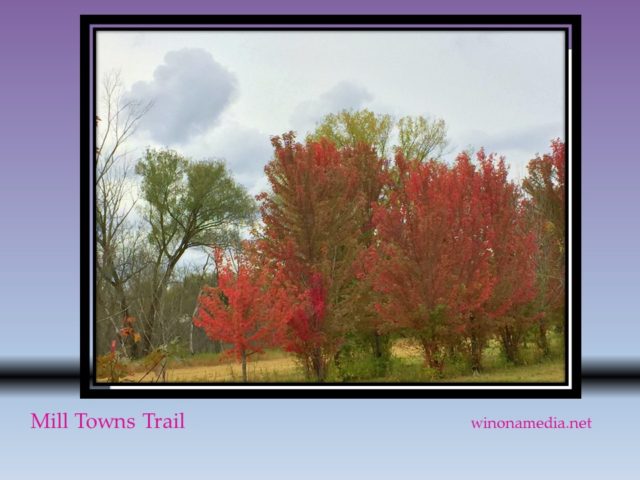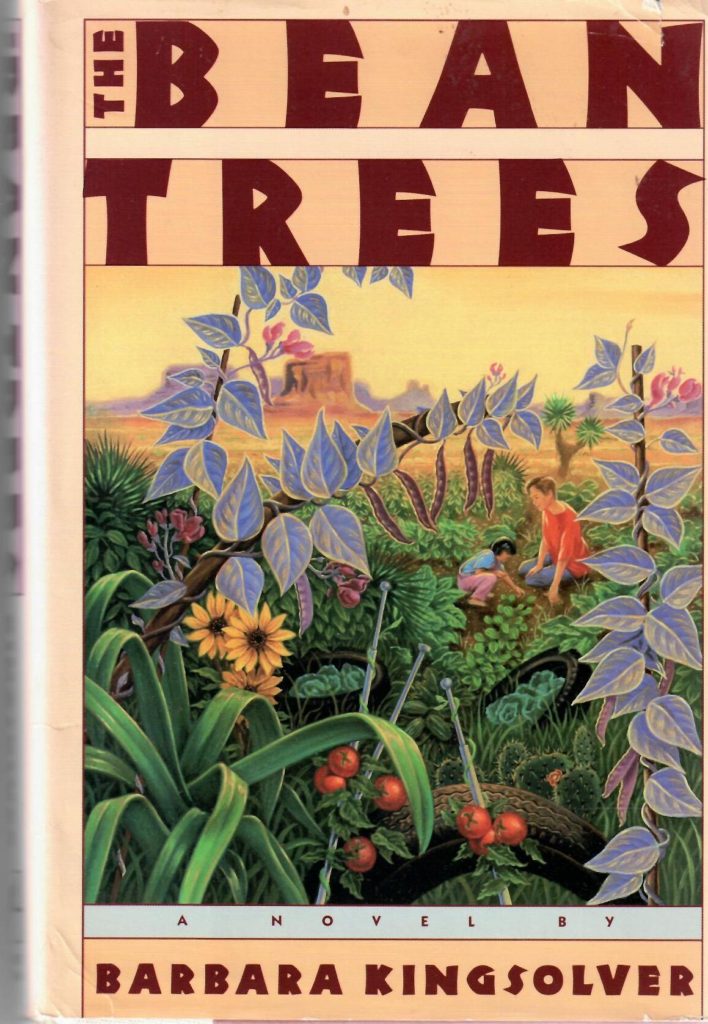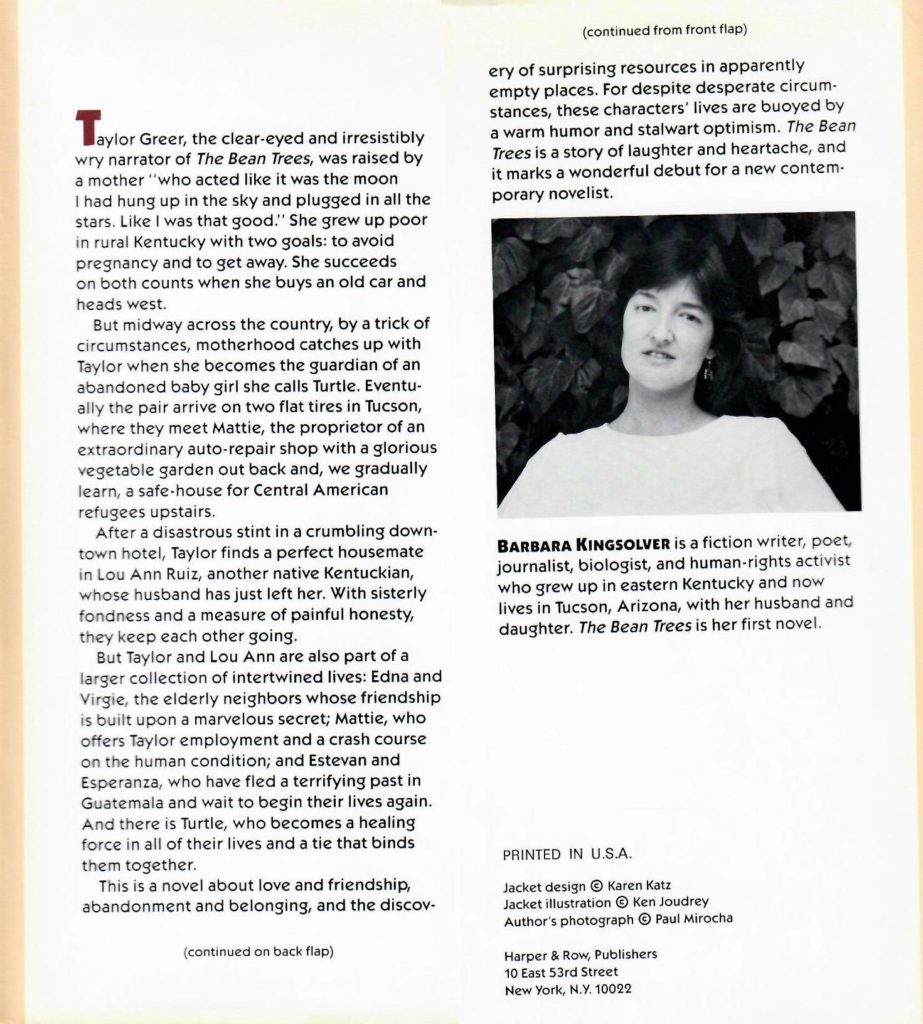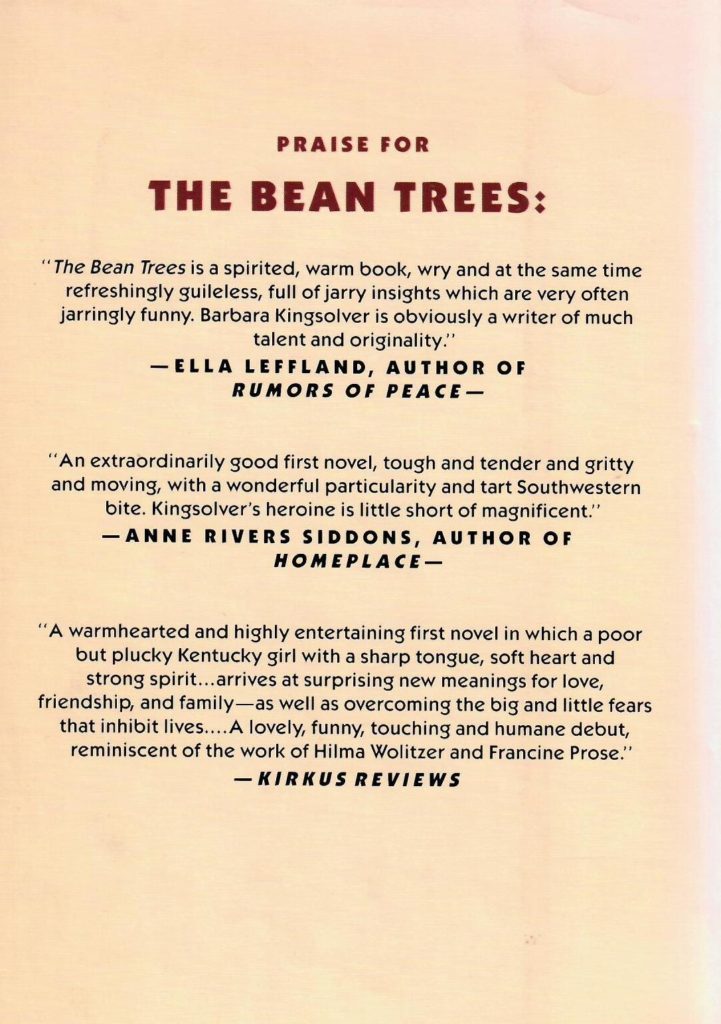
Postcard: October 5, 2020



As of 2020, Barbara Kingsolver has published fifteen books. The Bean Trees, her first novel, was published in 1988, and slowly (through word of mouth by readers, librarians, and bookseller) garnered positive reviews, robust sales, and, eventually, a secure place on English class syllabi.
I was completely wowed by this book when I read it in 1989. If I recall correctly, it was legendary bookseller Barbara Bonner who told me I had to read it, and, as usual, she was quite correct in her taste, judgment, and urgency. The well-worn hard-cover copy you see here is my own.

Here is that review from thirty years ago:
BOOKMARK (Published in The Northfield News in 1990)
by Leslie Schultz
The Bean Trees by Barbara Kingsolver, Harper & Row, $7.95
This is part of the discovery made by Taylor Greer, a young woman from Pittman, Kentucky who confesses mortal fear of only two things in life–tires and motherhood. Her fear of tires stems from witnessing a man blown sky-high when a tractor tire exploded. Her fear of motherhood seems a natural reaction to Pittman County, where more high school girls gestate than graduate.
When a baby trusts you, it gives you the strength to fight the whole world if you have to–even if that baby is mysteriously thrust into your arms one dark night as you are driving off to find freedom for yourself.
The Bean Trees, a first novel by Barbara Kingsolver, opens with distinct echoes of some of the last decade’s most interesting new novelists: Carolyn Chute, Olive Ann Burns, and, especially, Bobbie Ann Mason. By the end of the first chapter, however, the echoes die away, and self-named Taylor Greer emerges–determined, mouthy, and itching to get out of her hometown.
Taylor makes her getaway in the hull of a ’55 VW Beetle, a barely driveable relict with no windows or starter. This vehicle serves as more than transportation; the scrappy VW helps to baptize her for her new life by running out of gas in Taylor, Illinois; by engineering her pivotal, lifechanging stop on a Cherokee reservation in Oklahoma; and by blowing its bald tires mere blocks from her providential stop at the Jesus Is Lord Used Tires store in Tucson.
The Bean Trees chronicles a year in which Taylor’s life becomes entwined with those who can help her and those who need her strength: Mattie, the proprietor of Jesus Is Lord, who runs a sanctuary for Latin American refugees upstairs; Lou Ann, a deserted new mother who imagines dismemberment and salmonella poisoning at every turn; Estevan and Esperanza, two political refugees from Guatemala who have been scarred in ways that cannot be seen; and Turtle, the Cherokee baby girl whose months of silence break when she learns to name vegetables.
This novel is about great damage and great healing. From a rich mix colloquial language, off-beat characters, and an imaginative plot, a central theme of hope in the face of justified despair is skillfully developed. Looking at Turtle’s x-rays through the light of the pediatrician’s window, where the evidence of multiple fractures says what the child cannot, Taylor finds herself looking “through the bones to the garden on the other side.” Just as the desert miraculously blooms after spring rain, this novel unfolds like a flower in the reader’s hand, charming and teaching at the same time.

I have gone on to read and admire and often love other works by Kingsolver. Certainly she is a consummate storyteller and an inspiring environmentalist who truly believes, as I do, that works of literature hold the potential to make the world a better place by enlarging the vision and touching the hearts of readers.
Just as certainly, Kingsolver would never have known of my small-town paper review back in 1990 of her first book, but it is still the work of hers that I love the most. This winter, I am looking forward to the pleasure of reading it again. Maybe I will revisit Bobbie Ann Mason, Carolyn Chute, and Olive Ann Burns, too. Maybe Elsa Lefland, too. I have been wanting to reread Rumors of Peace. And then, perhaps, more of Kingsolver’s later work. There are many happy hours of reading there, as a glance at her website makes clear, and I need to shore up my sense of hope just now.
Are there works from your own reading past–poems, essays, short stories, or novels– that are calling to you now? If so, I would like to know what they are and why you think this is the time to reread them.
Happy autumn reading! Leslie


(Please note: the image above of the purple beans is by rguadet17 and is used by permission via the photo site Pixabay.